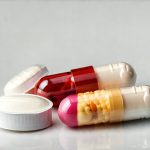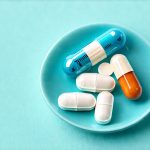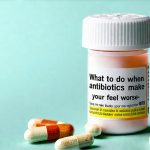Recovering from a bladder infection (cystitis) can be disruptive, impacting daily life with uncomfortable symptoms like frequent urination, burning sensations, and abdominal discomfort. While antibiotics are typically prescribed to combat the bacterial cause, effective home-based care is crucial for accelerating recovery, preventing complications, and restoring overall well-being. This isn’t simply about waiting out the antibiotic course; it’s an active process of supporting your body’s healing mechanisms and minimizing further irritation. Understanding how to manage symptoms and promote comfort at home can significantly improve your experience during this time.
This article will delve into practical strategies for post-bladder infection recovery, focusing on hydration, dietary considerations, hygiene practices, and pain management techniques. It’s important to remember that every individual responds differently to illness and treatment, so listening to your body and adjusting these recommendations based on your specific needs is vital. Always consult with your healthcare provider if symptoms worsen or do not improve as expected – this information is intended to complement, not replace, professional medical advice.
Hydration and Dietary Support
Adequate hydration is arguably the most important aspect of post-bladder infection recovery. Flushing the urinary tract helps remove lingering bacteria and prevents recurrence. Aim for a consistent intake of water throughout the day—at least eight 8-ounce glasses, but potentially more depending on your activity level and climate. Monitor your urine color; pale yellow indicates good hydration. Beyond plain water, herbal teas like chamomile or ginger can be soothing, offering additional benefits without irritating the bladder. However, avoid caffeinated beverages, alcohol, and sugary drinks which can exacerbate inflammation and frequency.
Diet plays a significant role in supporting recovery. While there’s no one-size-fits-all diet for cystitis recovery, focusing on anti-inflammatory foods is generally beneficial. Incorporating fruits and vegetables rich in Vitamin C (citrus fruits, berries, peppers) can strengthen the immune system. Foods containing probiotics—like yogurt or kefir—can help restore a healthy gut microbiome, which indirectly supports overall immunity. Conversely, spicy foods, acidic fruits (tomatoes, oranges), and artificial sweeteners may irritate the bladder for some individuals, so pay attention to how your body reacts and adjust accordingly. You can explore further dietary considerations with nutritional guidance for quick UTI recovery.
It’s also crucial to consider food sensitivities. Some people find that dairy products or gluten contribute to inflammation. Keeping a food diary can help identify potential triggers. Remember that dietary changes should be gradual and based on your individual tolerance; there is no need for extreme restrictions unless advised by a healthcare professional or registered dietitian. Prioritizing easily digestible foods reduces the strain on your body during recovery, allowing it to focus its energy on healing.
Pain Management & Comfort Measures
Managing pain and discomfort is central to improving quality of life during recovery. Over-the-counter pain relievers like ibuprofen or acetaminophen can provide temporary relief, but always follow dosage instructions carefully and consider potential interactions with other medications you may be taking. Warm compresses applied to the lower abdomen can help soothe muscle spasms and reduce cramping. A warm bath—avoiding harsh soaps or bubble baths—can also offer significant comfort.
Beyond medication, exploring alternative pain management techniques can be beneficial. Mindfulness meditation and deep breathing exercises have been shown to reduce stress and alleviate discomfort. Gentle stretching or yoga poses tailored for pelvic health (under the guidance of a qualified instructor) may help ease muscle tension. It’s important to find what works best for you—experiment with different methods to discover what provides the most relief.
Furthermore, prioritize rest. Your body needs time to heal and repair itself. Avoid strenuous activities and get adequate sleep. Listen to your body’s signals and don’t push yourself beyond your limits. Rest is not a luxury; it’s an essential part of the healing process. Consider short naps throughout the day if you feel fatigued.
Hygiene and Prevention Strategies
Proper hygiene practices are vital for preventing recurrence, even after antibiotic treatment has concluded. Always wipe from front to back after using the toilet to minimize bacterial spread. Avoid douching or using harsh feminine hygiene products, as these can disrupt the natural vaginal flora and increase susceptibility to infection. Wear breathable cotton underwear and avoid tight-fitting clothing which can trap moisture and create a breeding ground for bacteria.
Sexual activity can sometimes exacerbate bladder symptoms. Discuss with your healthcare provider whether any adjustments are necessary during recovery. After intercourse, urinating promptly helps flush out potential bacteria. Maintaining good personal hygiene is not just about preventing future infections; it’s also about supporting overall health and well-being. For a more comprehensive approach to preventative care, consider reviewing adaptive daily routines for chronic UTI recovery.
Consider preventative measures like cranberry supplements (although evidence is mixed regarding their efficacy) or D-mannose, which can help prevent bacteria from adhering to the urinary tract walls – but always discuss these with your doctor before starting any new supplement regimen. Kitchen-friendly remedies can also be helpful during this stage. Proactive hygiene is key to minimizing the risk of future bladder infections and maintaining a healthy urinary system.





















